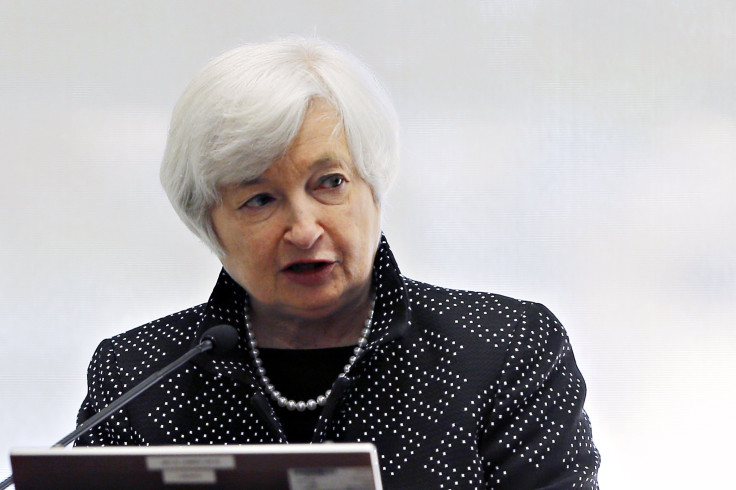Slower Global Economy Not Likely To Change Federal Reserve Policy

Despite a stronger U.S. dollar and forecasts of slowing global economic growth that shook financial markets this month, Federal Reserve officials won’t likely change their outlooks on the U.S. economy as they prepare for their policy meeting next week. Job gains in the U.S. will continue to lift the American economy and offset weakness overseas, economists say.
The Fed will most likely end its bond-buying program (also known as quantitative easing, or QE3) as scheduled at the Oct. 28 to Oct. 29 meeting, and economists expect an interest rate hike next year as early as June or late as December. Last Wednesday, Fed officials said that the U.S. economy is growing at a “modest to moderate” pace, as consumer spending improves and pressures on employers to raise wages increase in some industries.
“The U.S. economy still looks healthy; the labor market is resilient,” said Thomas Costerg, macroeconomist for the bank Standard Chartered. “With the weakening eurozone, we’re speaking about some abstract risks.”
The International Monetary Fund said earlier this month that there’s a 40 percent chance that the eurozone will fall into its third recession in six years, as inflation has hit a five-year low at just 0.3 percent in September. In August, exports from Germany, Europe’s largest economy, plunged and added to fears of a recession. And forecasts for growth in Japan and China have also fallen in the past three months.
The Fed has been buying mortgage and long-term Treasury bonds since 2012. The purchases help the Fed maintain its 2 percent inflation target and hold down interest rates to keep borrowing costs low and stimulate the economy. The Fed said after its September meeting that it planned to end the asset-buying program this month if economic conditions allow.
Since September, the dollar has gained against other currencies, and inflation has fallen below the Fed’s 2 percent target, driven by lower commodity prices. Global oil prices have fallen to their lowest level in two years, while U.S. gasoline prices are at a four-year low. September’s inflation data released Oct. 22 may add to concerns of softer inflation.
“Since the recent fall in U.S. inflation expectations is solely being driven by the decline in oil prices, it won’t prevent the Fed from ending QE3 or raising interest rates next year,” Paul Dales, senior U.S. economist for Capital Economics, said in a research note Monday.
Goldman Sachs analysts said Friday that weak foreign economic growth would likely shave off 0.3 percentage points from global economic growth in 2015, and 0.1 to 0.3 percentage points off of U.S. growth. “The overall impact is still not dramatic,” they wrote in a research note.
© Copyright IBTimes 2024. All rights reserved.












